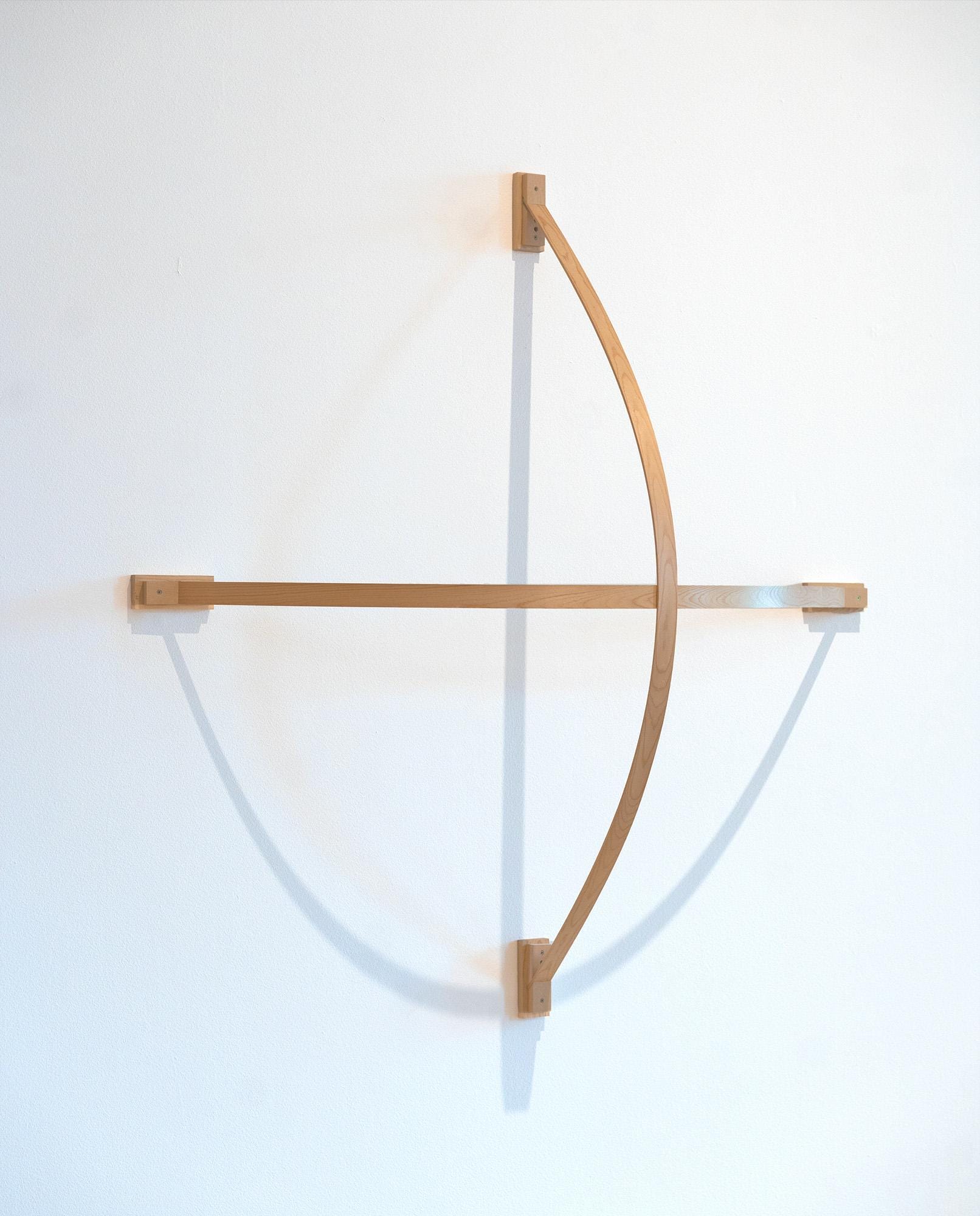
Truman Lowe
thunder bay II
Thunder Bay II is a wall-mounted sculpture made from wood that features curved wooden slats that cross as a central point. Truman Lowe’s wooden sculptures are influenced by the traditional methods of splint-plait basket-making of the Black River Falls Ho-Chunk community. Lowe’s parents worked together to create ashwood baskets. First, his father would go out and carefully select the wood. His father would dry the wood and his mother would dye the strips of wood and weave the baskets. Lowe’s father would finish the baskets by making and attaching wooden handles. In honor of his father’s deep knowledge of wood, Lowe began to practice working with wood until he was familiar with its levels of pliability. To him, the wood was alive, much like how he felt that water was alive. His interest in geometry is also reflected in this piece, which can be seen as a drawing in space. In creating Thunder Bay II, Lowe combined traditional Ho-Chunk materials with contemporary and minimalist approaches.
The Artist
Truman lowe
Truman Lowe was born in 1944 and grew up in a Ho-Chunk community near Black River Falls, Wisconsin. He earned his undergraduate degree from UW-La Crosse in 1969 and taught at Valders High School. He continued his education and received his Masters in Art in 1975 from UW-Madison. Lowe then moved to Emporia Kansas, where he became a visiting lecturer at Emporia State University. Returning to UW-Madison in 1975, he became an assistant dean of students, the Native American studies coordinator, and an assistant professor of art. In 1989, he became a full professor and served as the chair of the Art Department from 1992-1995. Additionally, he served as chair of the Chancellor’s Scholarship Committee from 1984 to 2004, where he recruited under-represented students interested in pursuing higher education. From 2000-2008, he was curator of contemporary art for the Smithsonian National Museum of the American Indian (NMAI).
Lowe received the Wisconsin Visual Art Lifetime Achievement Award from the Wisconsin Arts Board and received a Distinguished Alumni Award from the Wisconsin Alumni Association. His works have been exhibited at major venues both nationally and internationally.
Lowe always had a deep connection with nature, which became a source of inspiration for his work throughout his career. While his sculptures and installations were heavily influenced by his upbringing in the Ho-Chunk community, it also drew on his formal education. Lowe was recognized as a master sculptor. He was a mentor to many community members and was passionate about access to education.
Key Ideas
- Finding inspiration from one’s ancestry or roots
- Using naturally sourced materials for art-making
- Making observations in nature and using this experience to inform one’s work
- Themes of minimalism and geometric shapes
- Three-dimensional art as a “drawing in space”
Discussion Questions
- What do you notice about the lighting and shadows cast by this piece? Would you consider this to be a part of the artwork? Why or why not?
- What does this piece remind you of?
- Try walking around this piece and view it from different angles. How does this change your perception of the artwork?
- How different do you think the sculpture would be if it were made from a different material?